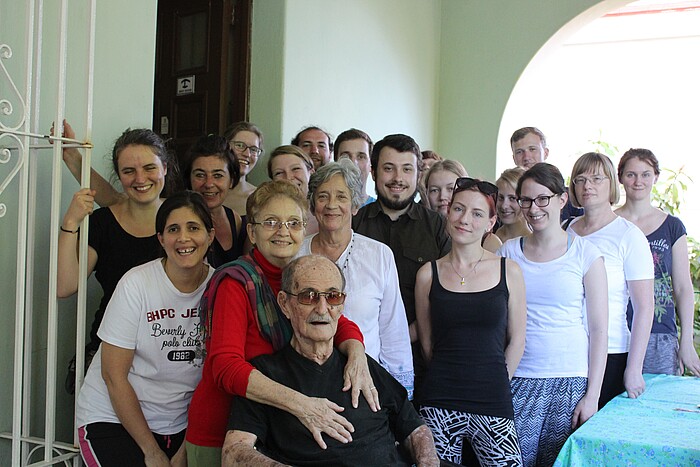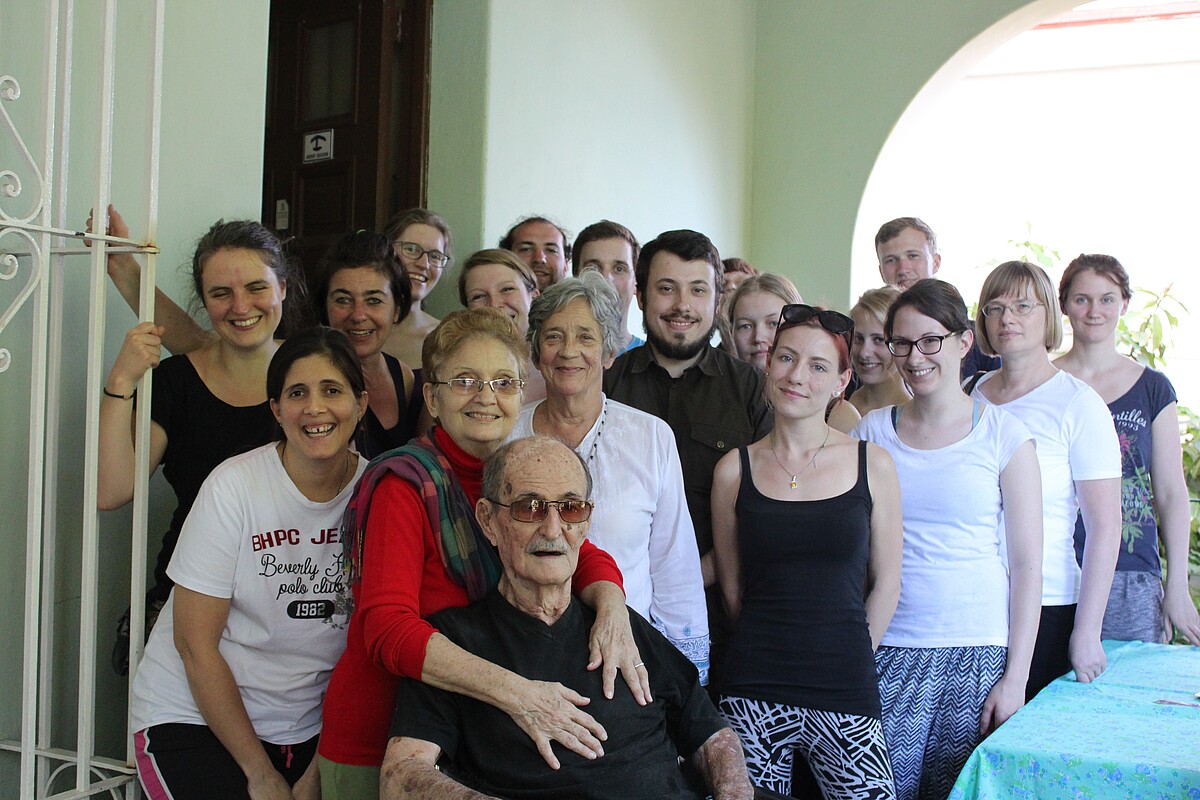

 ©
Alessandra Guhr
©
Alessandra Guhr
You already notice that Cuba is somehow different at the airport. The transition from cold Hanover, where snow has fallen on the same day, to sunny Havana is a challenge in the long run, even for the climate experts among the 12 student participants. Even sun protection factor 50 and mosquito spray, which is applied in layers as a precaution, do not protect against the sun and certainly not against the mosquitoes. Fortunately, there is far too much to experience anyway to let it bother us too much. Havana shows so many different sides of itself that you can be sure that with more time there would be so much more to discover. But you actually have to take your time, because everything here moves a little slower, from ordering food to waiting for the bus. For example, on the one hand there are the tourist restaurants on Calle Obispo, where you can even buy Coca Cola without any problems, and then on the other hand there are the markets of the locals, where you become painfully aware that it is actually almost impossible to live on the average Cuban salary. As excursion travellers, we get insights into both sides of the city, sometimes we are even in the middle of it when we travel by bus, which gives a completely new meaning to the word "crammed". In return, there is always cheerful music playing in it. In fact, the traffic in Cuba is now so advanced that we even get caught in a traffic jam on one of our trips home. Of course, this only concerns Havana - on an excursion to the area west of the capital, the cars are quickly replaced by horse-drawn carriages even on the country roads.
The excursions are accompanied by regular presentations by the students, which are not only striking in terms of content, but above all because of the locations of the lectures, which often have to adapt to the possibilities - for example, in the Instituto de Historia, where the lecturer can give her presentation on the Cuban workers' movement in front of a huge painting by José Martí and flanked by a huge image of the ancestral gallery of communism. Of course, the exchange with the Cubans themselves is particularly exciting. The conversations are mixed in terms of content, but no less interesting for that. It's just that you never know beforehand whether you're in for an equal exchange or a one-and-a-half-hour monologue according to the Communist Party's rule book. But it was especially the versatility and unpredictability of the socialist island state as well as the multifaceted excursion programme that made the student excursion something very special. A big thank you goes to Ms Hatzky, Ms Schmieder and Ms Reinwald!
Malisa Mahler, Silke Bremer, Natascha Rempel
